The Parton Family’s Skillet Cornbread
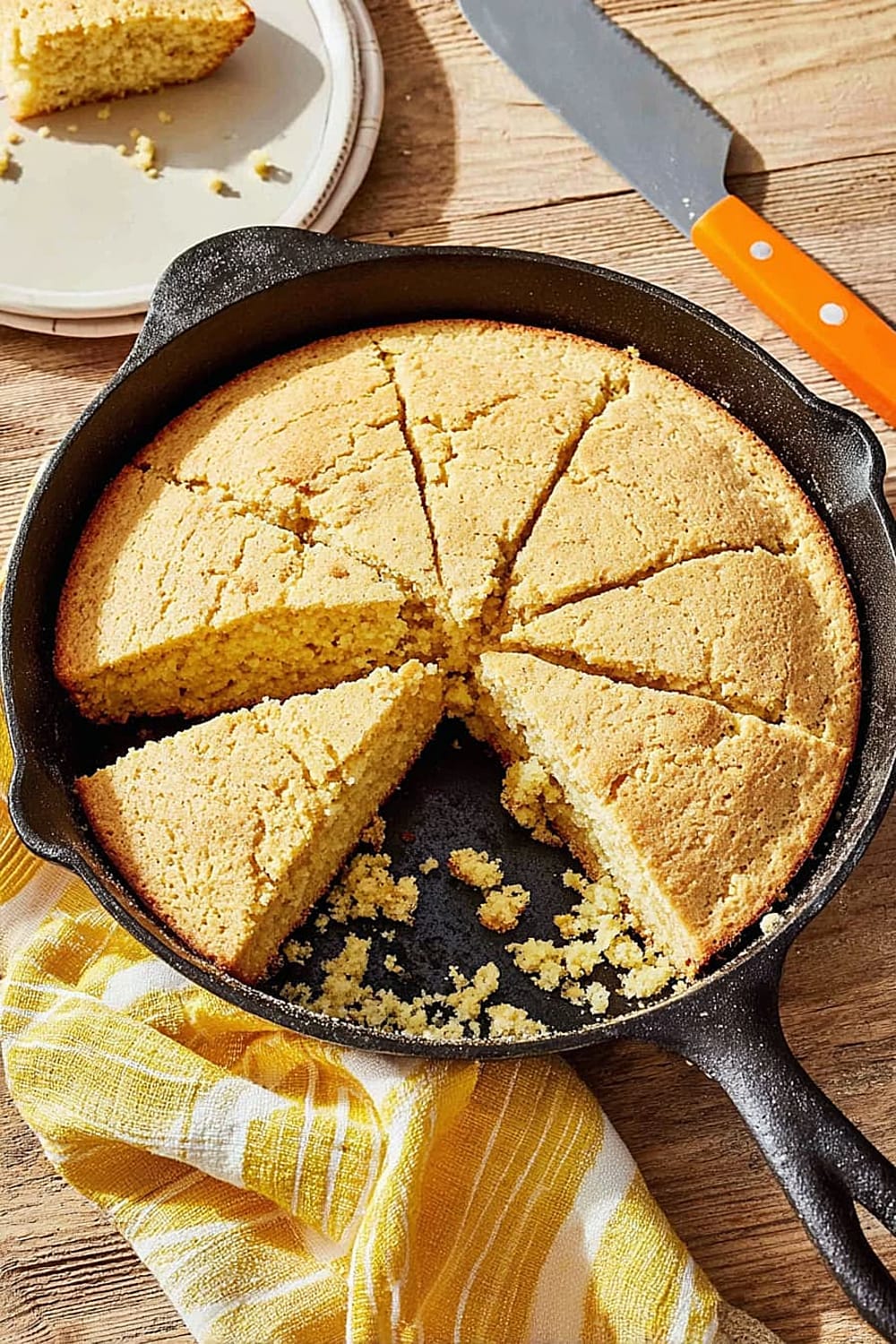
This cornbread is about to become your new kitchen superpower, delivering that perfect golden crust and tender crumb that makes people think you’ve been secretly taking Southern cooking classes.
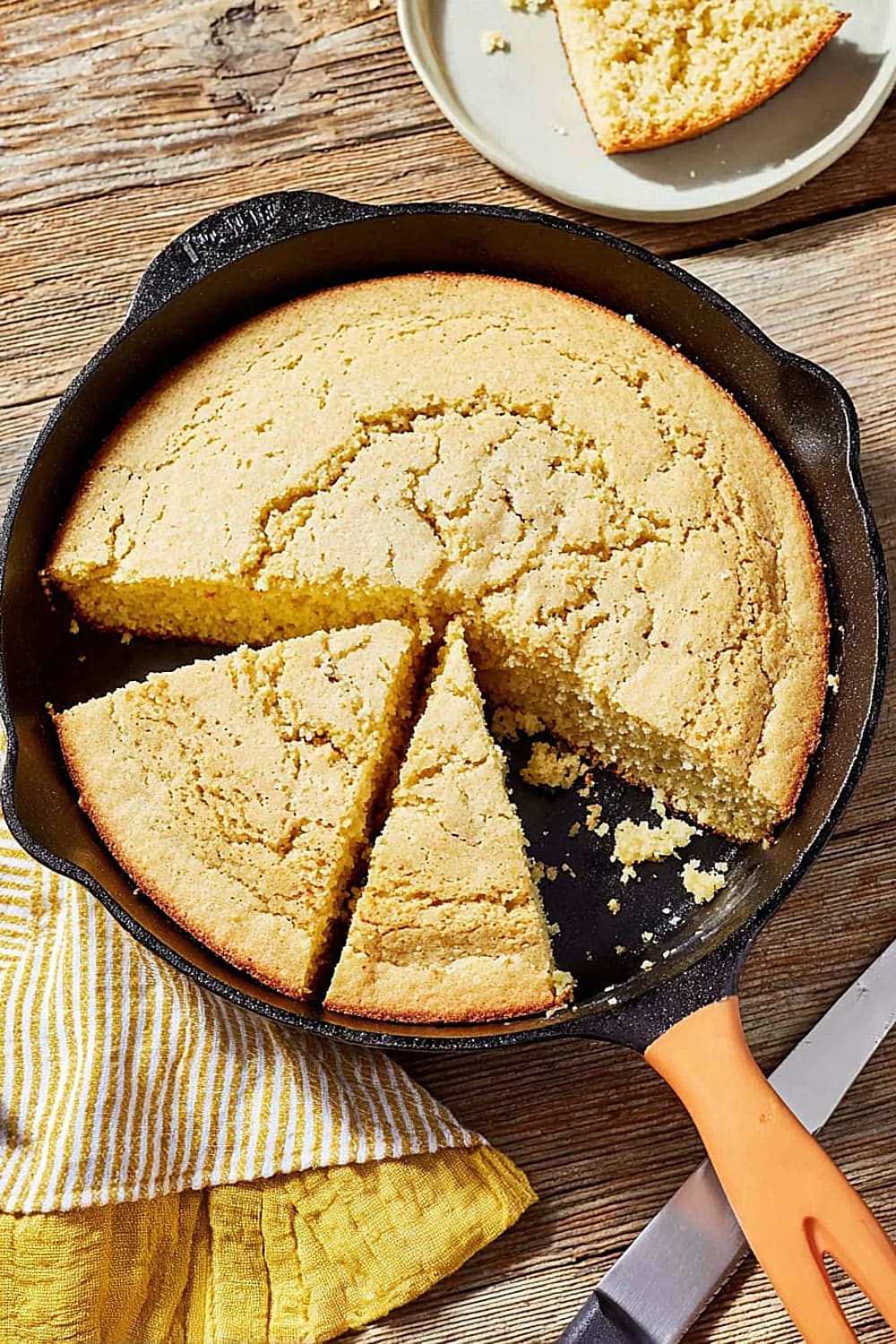
One bite delivers that signature sizzling-skillet magic with edges so crispy they practically crackle, while the center stays impossibly fluffy and buttermilk-tangy.
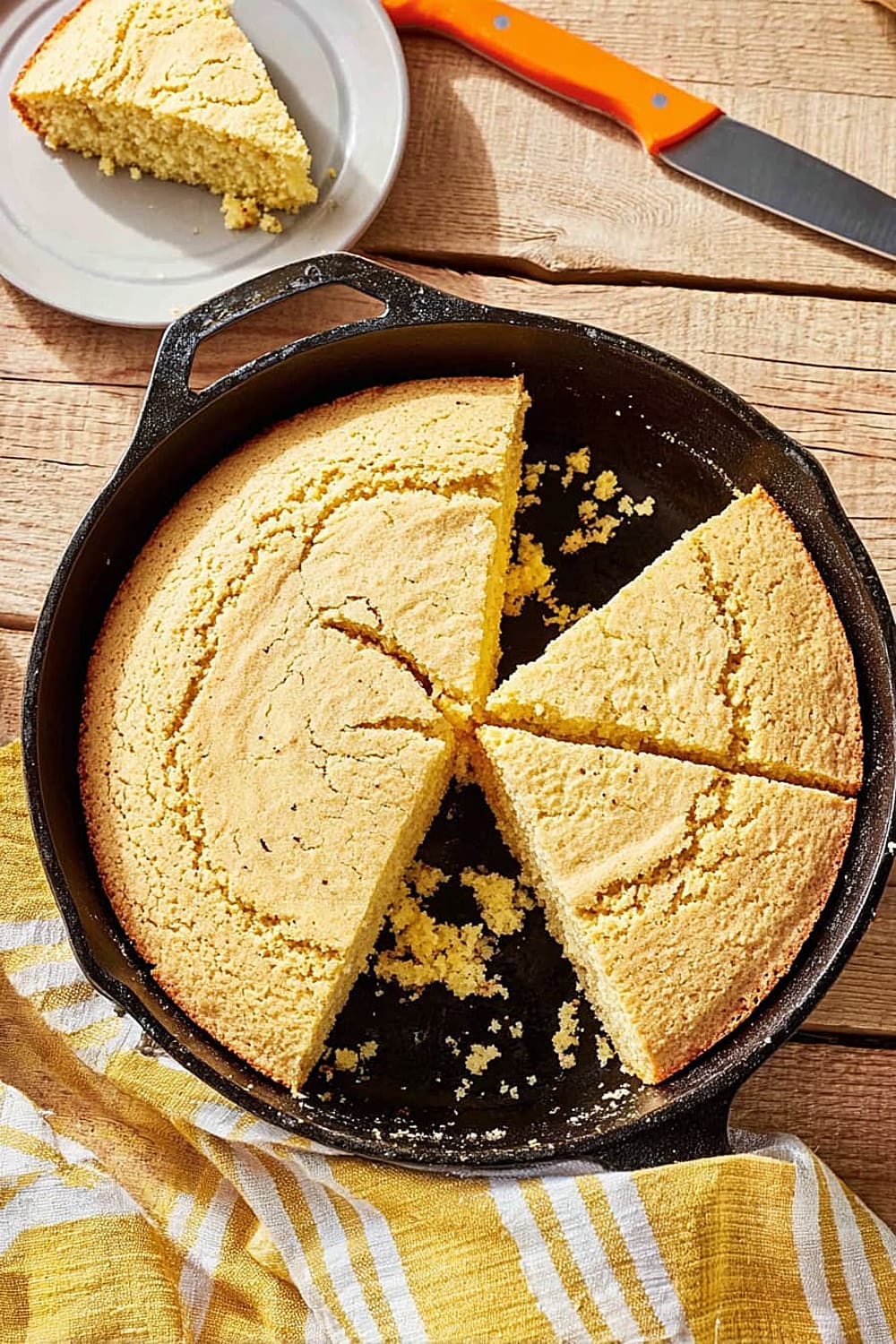
The secret weapon here is that smoking-hot cast iron skillet that creates an instant crust the moment that batter hits the pan, giving you restaurant-quality results from your own kitchen.
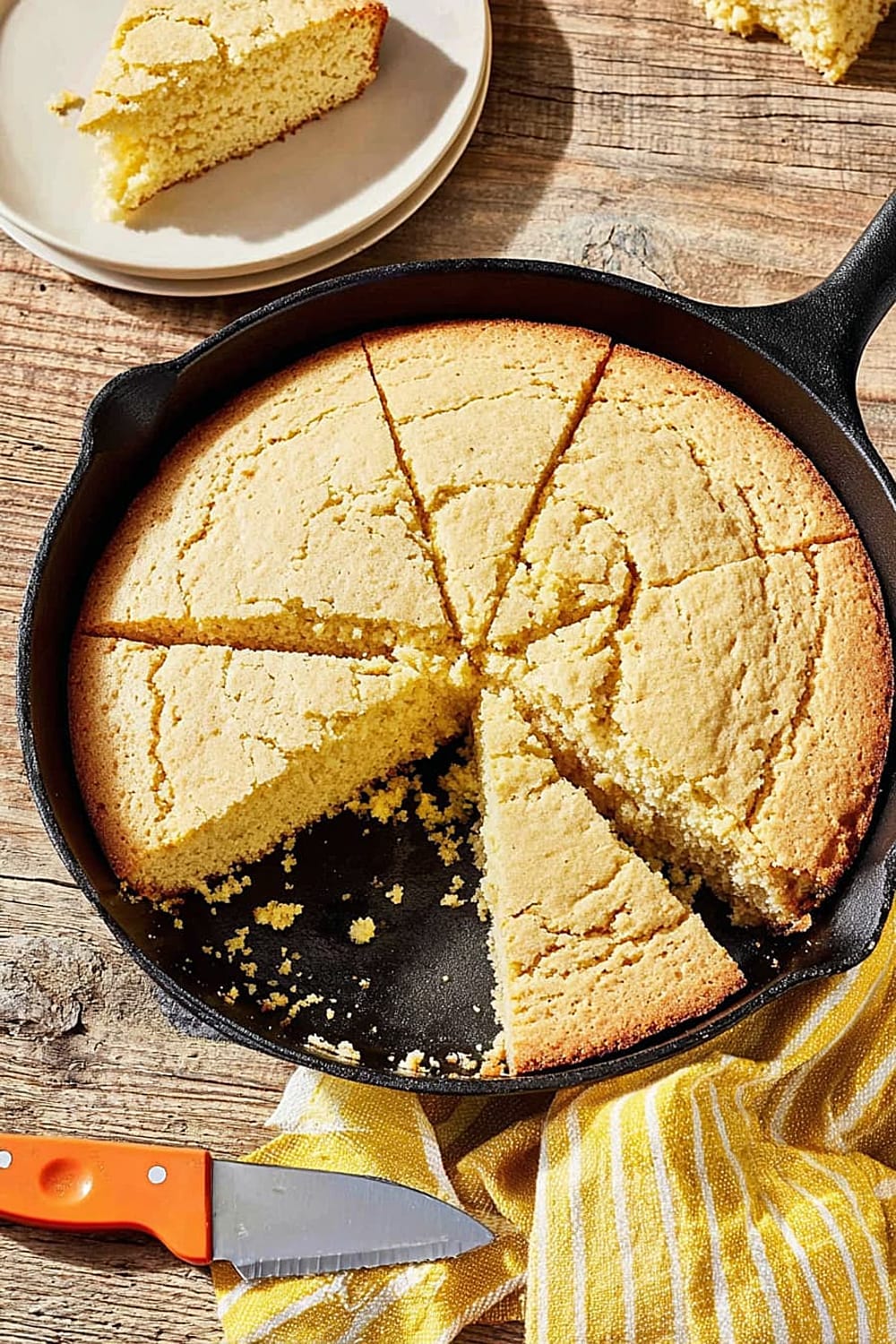
This isn’t just cornbread—it’s the kind that makes people pause mid-conversation, fork halfway to their mouth, asking “Wait, how did you make this so good?”
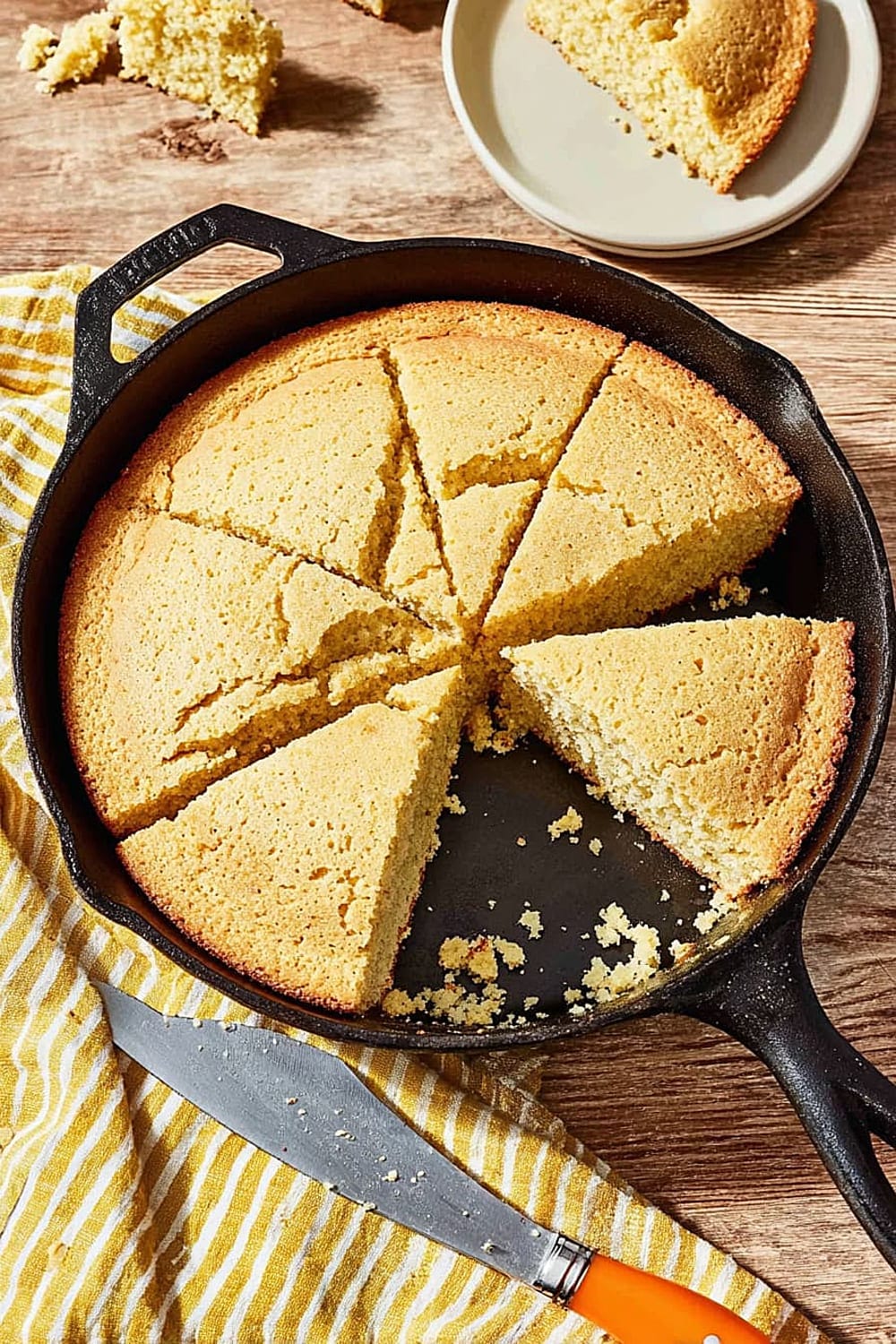
The beauty lies in its simplicity: just five ingredients and one well-seasoned skillet standing between you and cornbread perfection that would make any Southern grandmother proud.
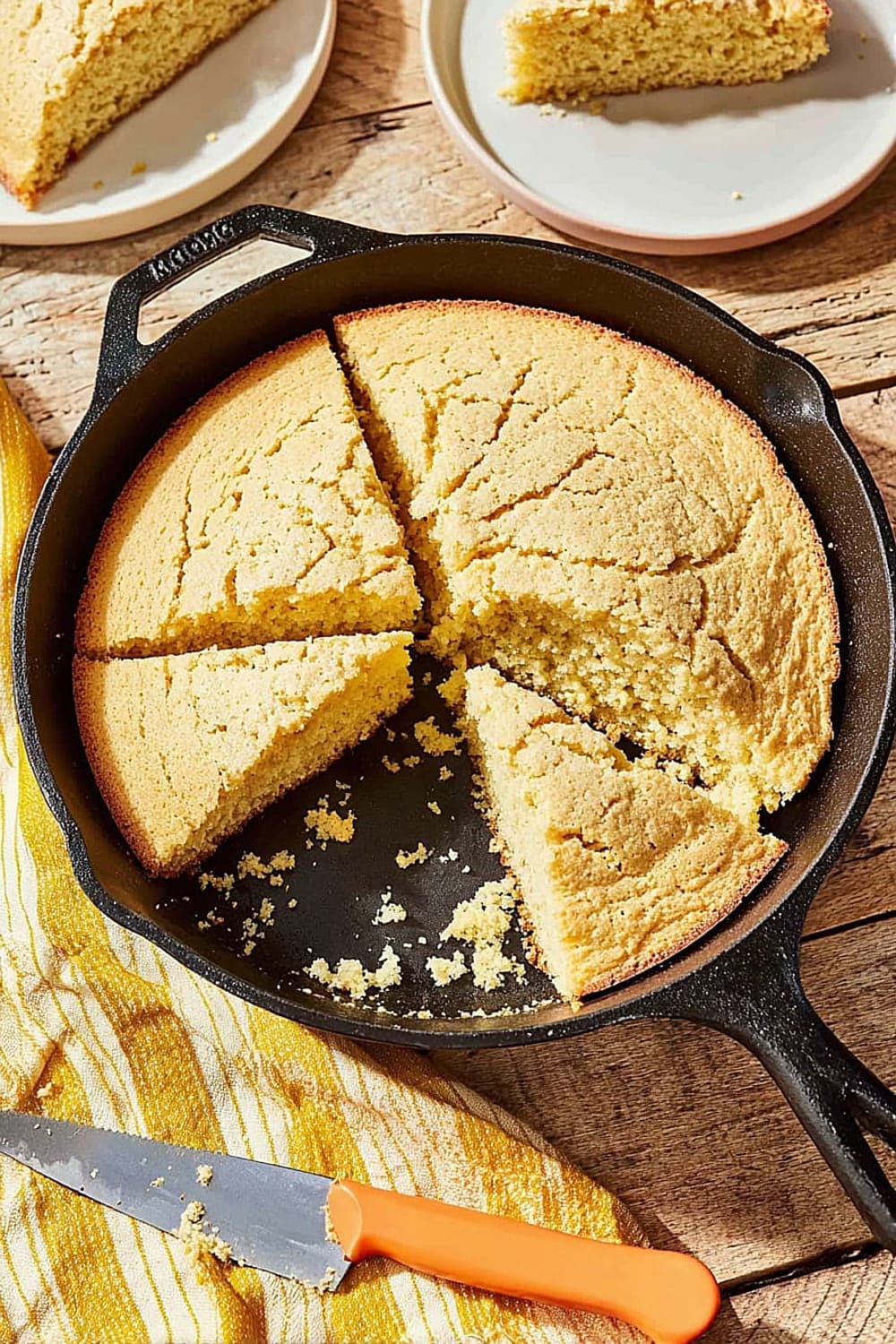
Get ready for that satisfying sizzle when the batter meets hot bacon grease, because that sound means you’re about to create something absolutely magical.
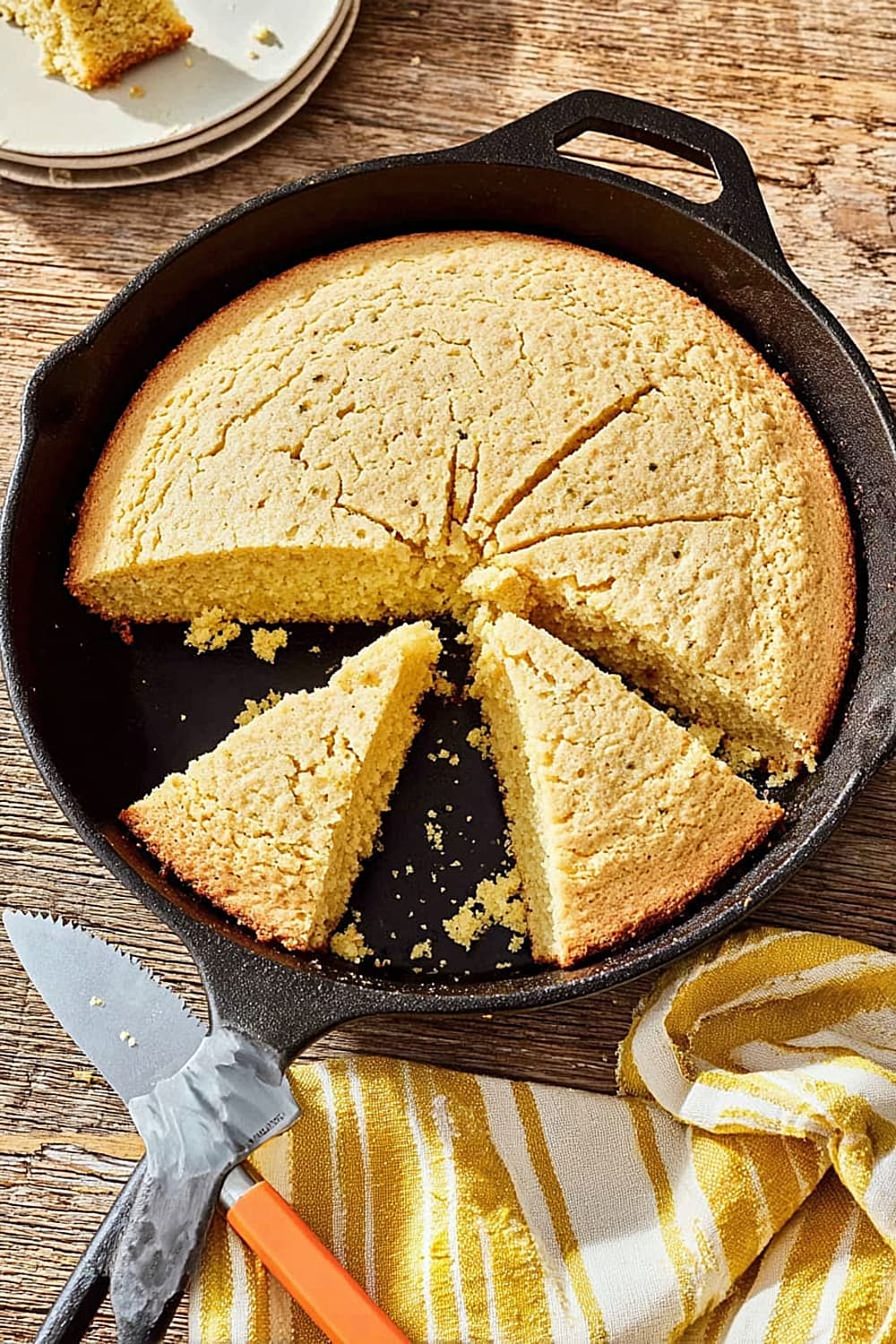
Ingredients
For the Skillet Cornbread
- 5 tablespoons bacon grease or shortening
- 2 cups Martha White or White Lily self-rising buttermilk-enriched white cornmeal mix
- 1½ cups whole buttermilk, well shaken
- 1 teaspoon salt
- ¼ teaspoon black pepper
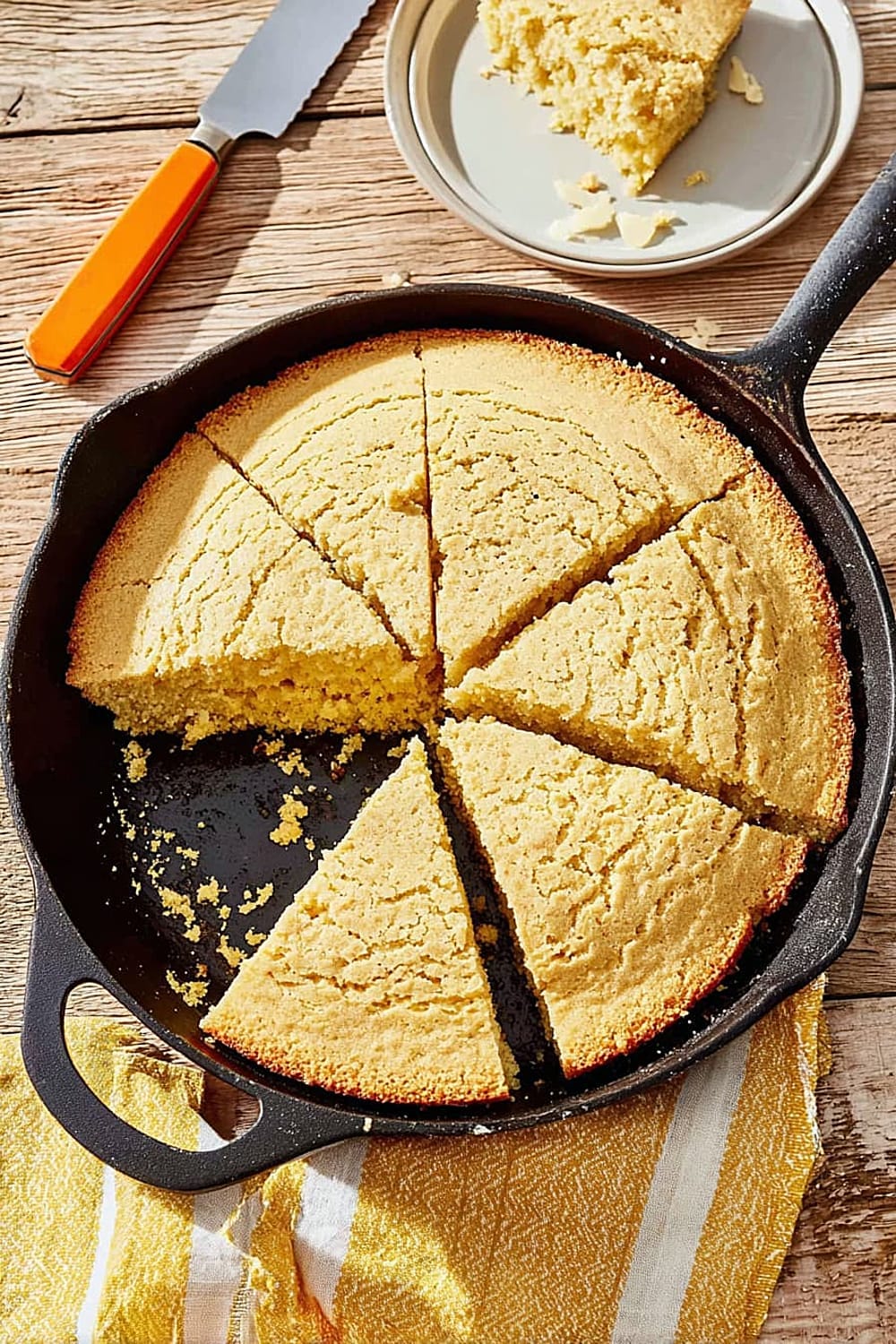
Instructions
Prepare the Skillet
- 1 Preheat your oven to 400°F (204°C) and position the rack in the center for even heating. Heat the bacon grease or shortening in an 8-inch well-seasoned cast iron skillet over medium heat on the stovetop until it’s smoking hot—this usually takes about 3-4 minutes. You’ll know it’s ready when you see wisps of smoke rising from the surface. Remove the skillet from the burner immediately to prevent the fat from burning.
Mix the Batter
- 2 In a large mixing bowl, whisk together the cornmeal mix, buttermilk, salt, and pepper until just combined—don’t overmix, as this can lead to tough cornbread. The batter should look slightly lumpy, which is exactly what you want for tender results.
- 3 Carefully add 2 tablespoons of the hot bacon grease from the skillet into the batter and mix well with a whisk or wooden spoon. This step is crucial because it helps create that tender interior texture while ensuring the remaining hot fat in the skillet will create the perfect crust.
Bake the Cornbread
- 4 Pour the batter into the hot cast iron skillet—you should hear an immediate sizzling sound around the edges, which means you’re getting that coveted crispy crust. Don’t worry if it sizzles dramatically; that’s exactly what creates the golden, crunchy exterior that makes skillet cornbread so special.
- 5 Place the skillet in the preheated oven and bake for 25 minutes until the top is golden brown and a toothpick inserted in the center comes out clean or with just a few moist crumbs. The internal temperature should reach 200°F (93°C) for perfectly cooked cornbread.
Cool and Serve
- 6 Remove from the oven and let the cornbread cool in the pan for 10 minutes—this resting time allows the structure to set properly and makes slicing much easier. Cut into wedges directly in the skillet and serve warm for the best texture and flavor experience.
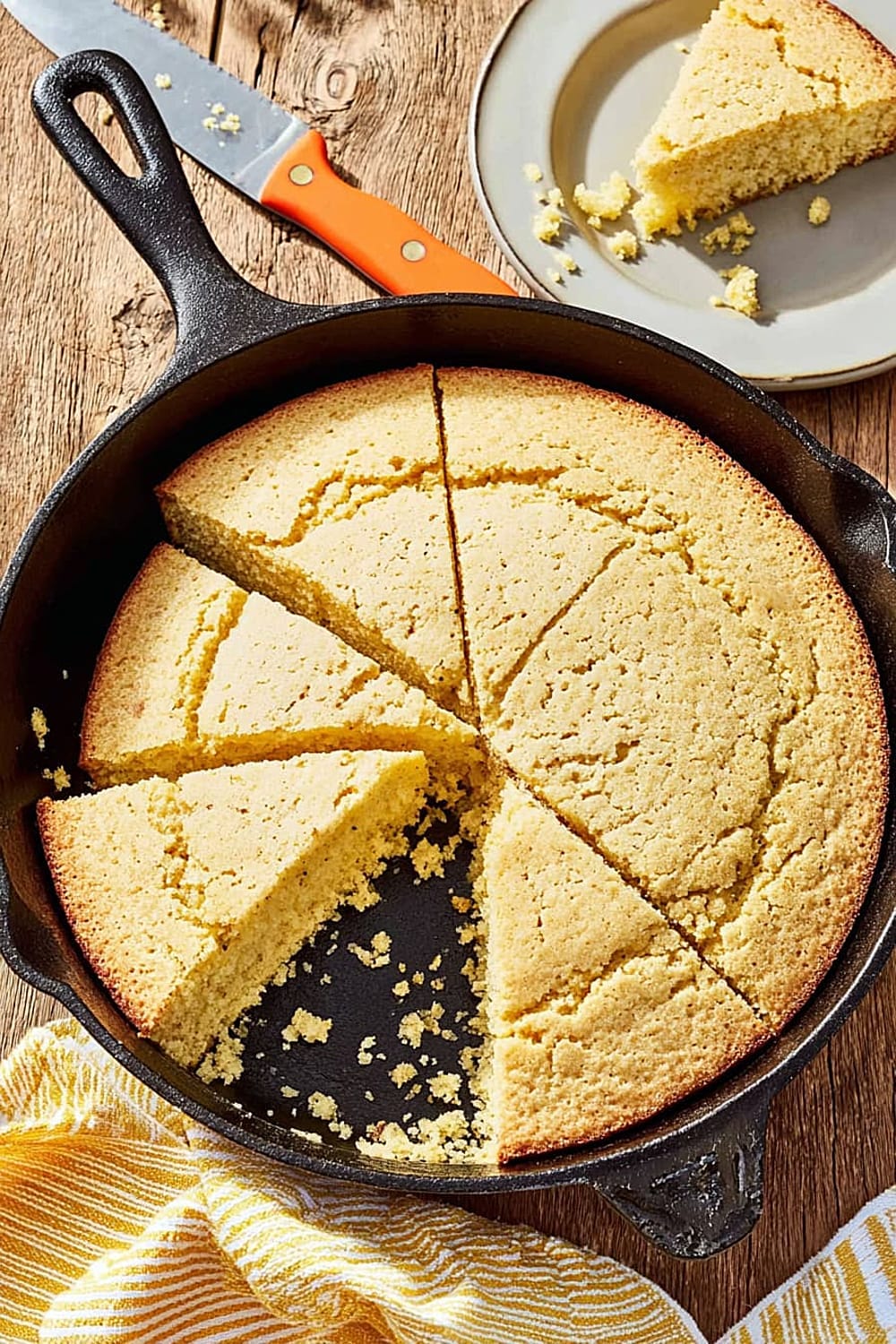
Recommended Equipment and Kitchen Tools
Essential Tools (for best results):
- 8-inch cast iron skillet – This is truly non-negotiable for authentic skillet cornbread. The heavy bottom distributes heat evenly and creates that signature crispy crust. A well-seasoned skillet prevents sticking and adds subtle flavor depth that you simply can’t achieve with other cookware.
- Large mixing bowl – You need enough space to whisk the batter without splashing, and ceramic or glass bowls won’t react with the acidic buttermilk like some metal bowls might.
- Wire whisk – Essential for combining the cornmeal mix with buttermilk smoothly while avoiding overmixing, which can make cornbread tough and dense.
Helpful Upgrades:
- Digital kitchen scale – For consistent results, weighing your cornmeal mix ensures perfect texture every time, especially if you’re making your own cornmeal blend or doubling the recipe.
- Silicone spatula – Perfect for scraping every bit of that precious hot bacon grease from the skillet into your batter without waste, and it won’t scratch your seasoned cast iron surface.
Nice-to-Have Options:
- Instant-read thermometer – Takes the guesswork out of doneness by checking that internal temperature of 200°F (93°C) for perfectly cooked cornbread every time.
- Bench scraper – Makes transferring cornbread wedges from skillet to serving plates much easier without breaking those beautiful crispy edges.
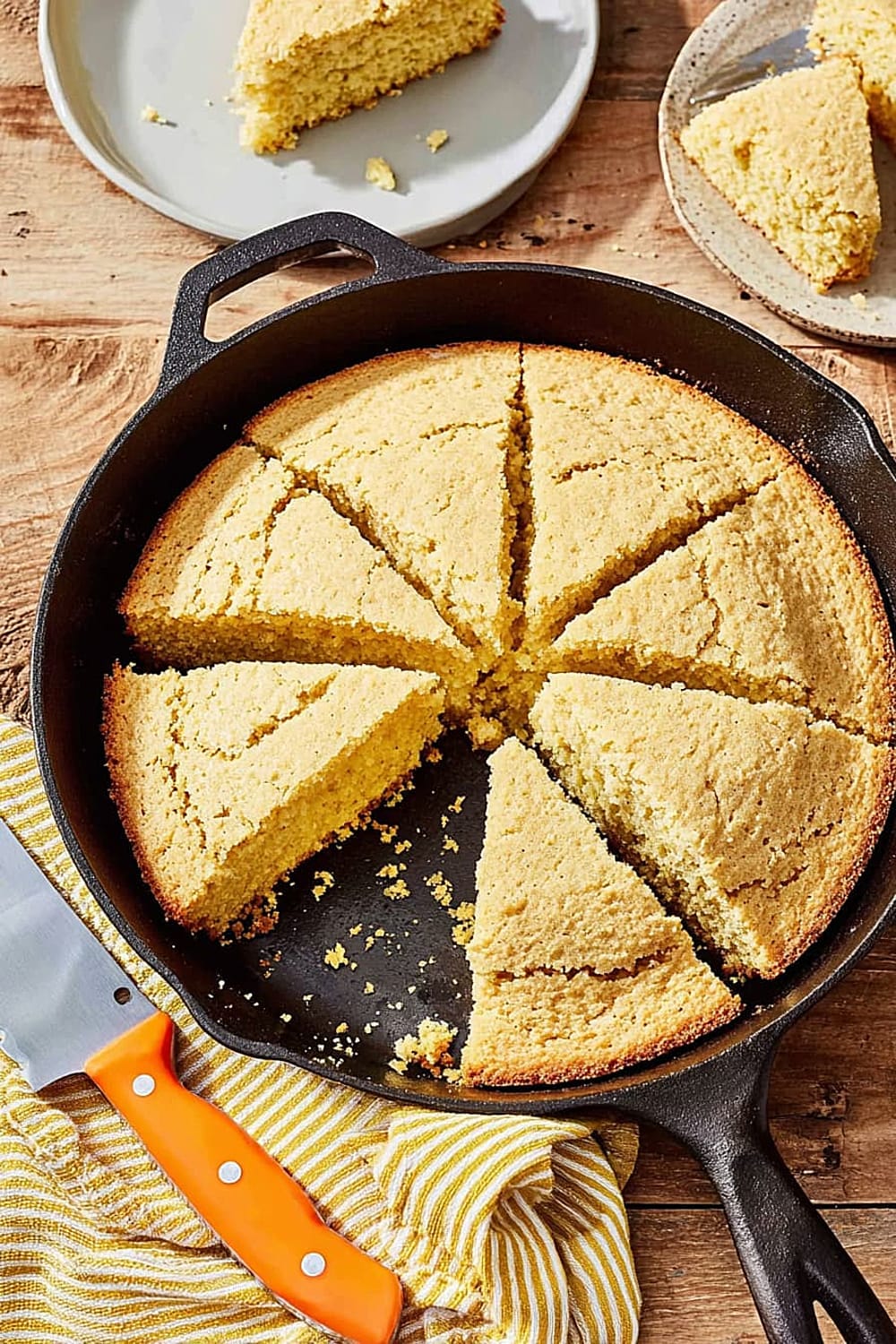
Recipe Variations and Dietary Modifications
Gluten-Free Adaptation:
- Replace the self-rising cornmeal mix with 2 cups stone-ground cornmeal plus 2 teaspoons baking powder and 1 teaspoon salt
- Add 2 tablespoons rice flour or cornstarch for better binding and texture
- Expect slightly more crumbly texture but equally delicious flavor
- Reduce baking time by 3-5 minutes as gluten-free versions often cook faster
Dairy-Free Modifications:
- Substitute buttermilk with 1½ cups unsweetened plant milk (oat or soy work best) mixed with 1½ tablespoons apple cider vinegar
- Let the milk mixture sit for 5 minutes to develop tanginess similar to buttermilk
- Use vegetable shortening or coconut oil instead of bacon grease
- Results in slightly less tangy flavor but maintains excellent texture
Flavor Variations:
- Jalapeño Cheddar: Add 2 tablespoons minced jalapeños and ½ cup sharp cheddar cheese
- Sweet Honey Version: Reduce salt to ½ teaspoon and add 3 tablespoons honey to the batter
- Herb-Infused: Stir in 1 tablespoon fresh chopped chives and 1 teaspoon dried sage
- Bacon Cornbread: Fold 4 strips cooked, crumbled bacon into the batter before baking
Seasonal Adaptations:
- Fall Harvest: Add 2 tablespoons pumpkin puree and ½ teaspoon pumpkin pie spice
- Summer Fresh: Incorporate ½ cup fresh corn kernels and 2 tablespoons chopped fresh herbs
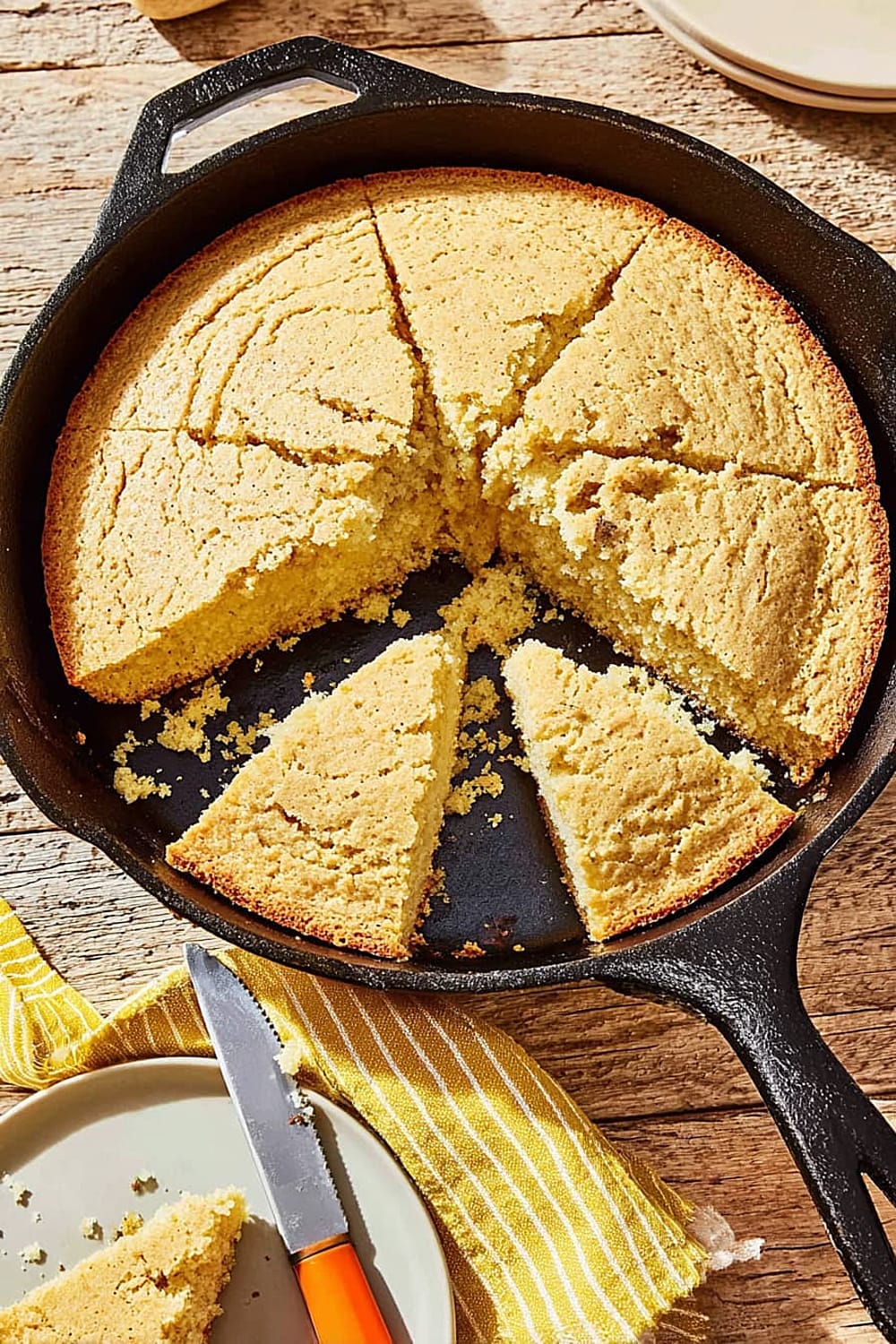
Nutritional Information and Health Benefits
Key Nutritional Highlights:
Each serving of this skillet cornbread provides approximately 285 calories with a balanced macronutrient profile. The cornmeal base delivers complex carbohydrates for sustained energy, while the buttermilk contributes high-quality protein and calcium. Each wedge contains roughly 8 grams protein, 35 grams carbohydrates, and 12 grams fat, making it a satisfying accompaniment to meals.
Health Benefits of Main Ingredients:
The stone-ground cornmeal provides essential B vitamins, particularly niacin and folate, which support energy metabolism and nervous system function. Buttermilk offers probiotics that promote digestive health, plus calcium and phosphorus for bone strength. The bacon grease, while used sparingly, provides vitamin D and adds satisfying healthy fats that help with nutrient absorption of fat-soluble vitamins.
Dietary Considerations:
This cornbread contains gluten from wheat-enriched cornmeal mix and dairy from buttermilk, making it unsuitable for those with celiac disease or lactose intolerance without modifications. However, it’s naturally nut-free and provides 3 grams fiber per serving. The moderate sodium content (420mg per serving) fits well within daily recommendations when paired with lower-sodium main dishes.
Nutritional Optimization Tips:
Serve alongside protein-rich beans or leafy green vegetables to create a complete amino acid profile and boost the meal’s vitamin and mineral content significantly.
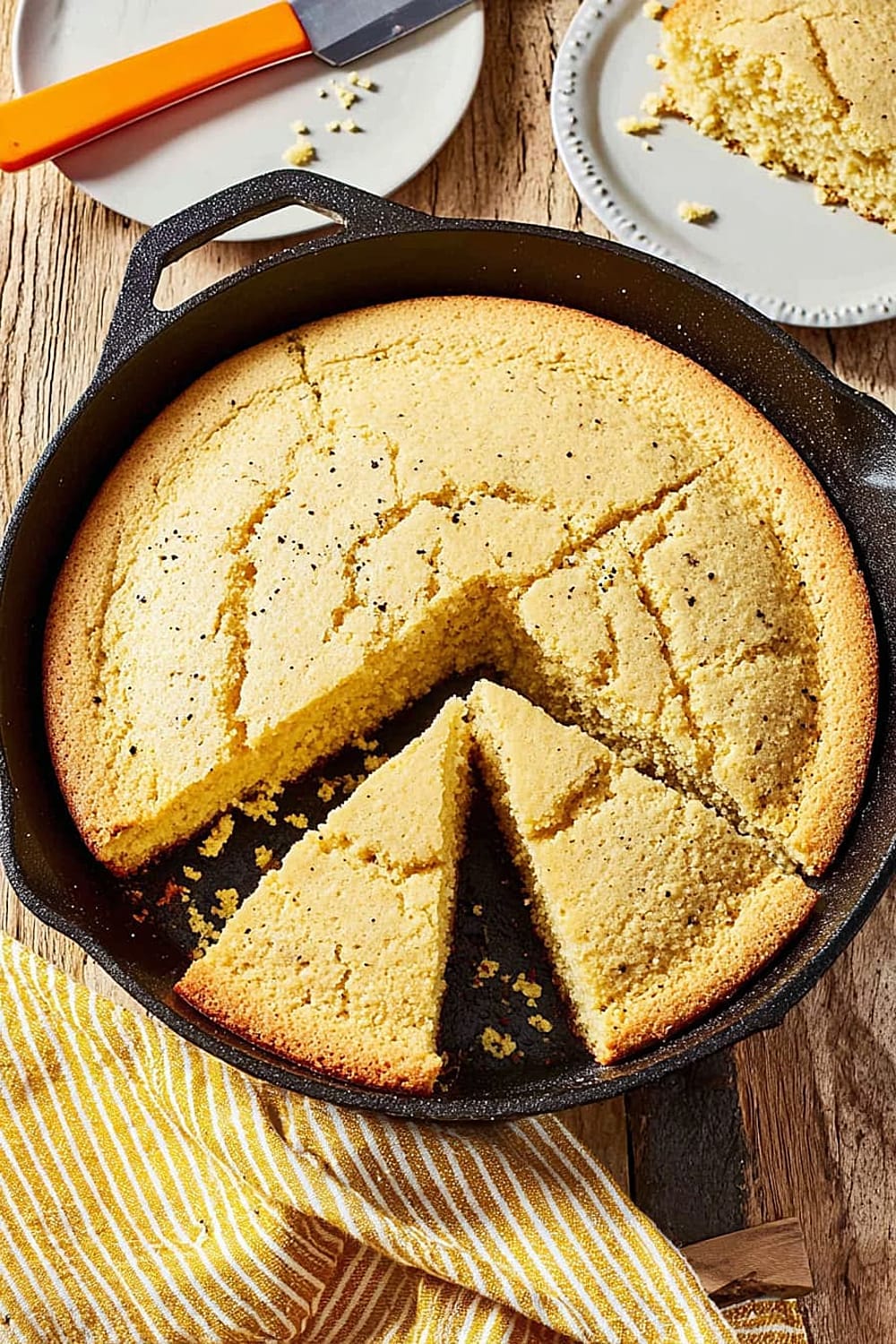
Smart Swaps and Ingredient Substitutions
Common Substitutions:
- Self-rising cornmeal mix → 2 cups regular cornmeal + 2 teaspoons baking powder + 1 teaspoon salt (creates identical leavening power)
- Whole buttermilk → 1½ cups regular milk + 1½ tablespoons white vinegar or lemon juice (let sit 5 minutes for proper acidity)
- Bacon grease → Vegetable shortening, lard, or melted butter (maintains proper fat content and cooking properties)
Budget-Friendly Swaps:
- Premium cornmeal brands → Store-brand self-rising cornmeal mix (delivers nearly identical results at half the cost)
- Fresh buttermilk → Powdered buttermilk reconstituted with water (keeps longer and costs less per use)
- Cast iron skillet → Well-seasoned carbon steel pan (similar heat retention at lower price point)
Pantry Emergency Substitutions:
- Self-rising cornmeal → 1½ cups all-purpose flour + ½ cup cornmeal + 2 teaspoons baking powder (different texture but still delicious)
- Buttermilk → 1¼ cups plain yogurt thinned with ¼ cup milk (provides similar tang and acidity)
- Black pepper → White pepper or paprika (maintains subtle spice element)
Pro Tips for Substitutions:
- Store bacon grease in the refrigerator for up to 3 months for future cornbread batches
- When using liquid substitutes for buttermilk, reduce by 2 tablespoons to maintain proper batter consistency
- Room temperature ingredients mix more easily and create better texture than cold ingredients straight from the refrigerator

Make It Diabetes-Friendly
Carb Reduction Strategies:
- Replace 1 cup cornmeal mix with 1 cup almond flour to reduce carbs by approximately 15 grams per serving
- Use sugar-free buttermilk if available, or make your own with unsweetened almond milk and vinegar
- Consider making smaller individual portions in a muffin tin to control serving sizes more precisely
Fiber Enhancement:
- Add 2 tablespoons ground flaxseed to boost fiber content and slow glucose absorption
- Incorporate ¼ cup finely chopped vegetables like bell peppers or zucchini for added fiber and nutrients
- Use stone-ground cornmeal when possible, as it retains more fiber than processed varieties
Portion & Timing Tips:
- Cut into 8 smaller wedges instead of 6 larger ones, reducing carbs to approximately 22 grams per piece
- Pair with protein-rich foods like grilled chicken or black beans to minimize blood sugar spikes
- Serve as part of a balanced meal with non-starchy vegetables to further moderate glucose response
Blood Sugar Management:
- The protein and fat content from buttermilk and bacon grease naturally help slow carbohydrate absorption
- Consider eating cornbread mid-meal rather than on an empty stomach for better glucose control
Total Carb Reduction: These modifications can reduce total carbohydrates by 20-25% while maintaining satisfying flavor and texture.
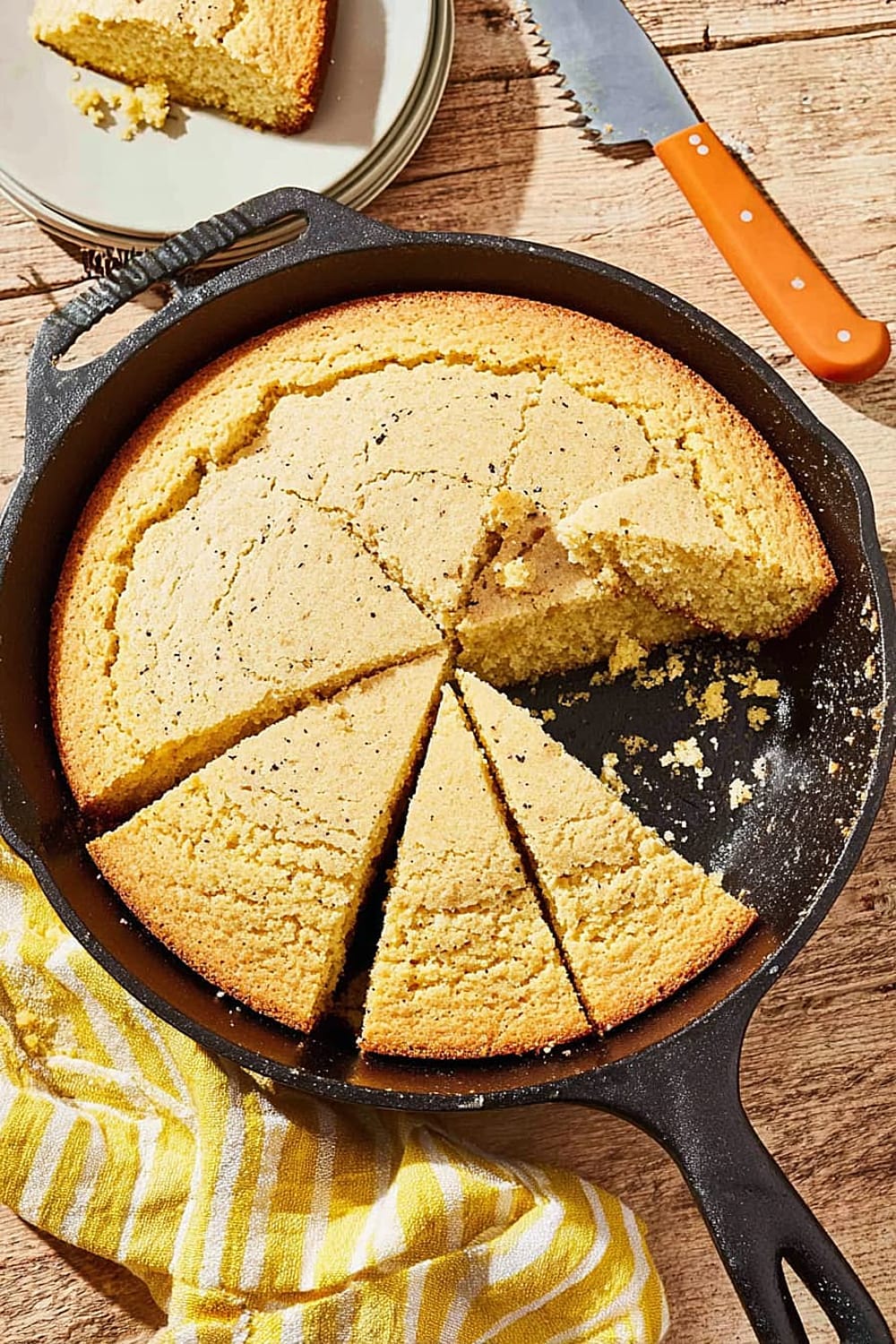
Perfect Pairing Suggestions
Beverage Pairings:
This rich, savory cornbread pairs beautifully with cold buttermilk or sweet tea for an authentic Southern experience. For adult beverages, try a crisp wheat beer or light lager that won’t compete with the cornbread’s subtle flavors. Bourbon-based cocktails complement the bacon grease richness perfectly, while dry white wines like Sauvignon Blanc provide a bright contrast to the hearty texture.
Side Dish Recommendations:
Serve alongside slow-cooked collard greens with ham hocks for classic Southern comfort, or pair with tangy coleslaw to cut through the richness. Black-eyed peas or pinto beans create a protein-complete combination, while honey butter or maple syrup transforms this into a sweet-savory treat. For lighter options, try with fresh tomato salad or cucumber relish that provides cooling contrast.
Complete Meal Ideas:
Build dinner around this cornbread with pulled pork barbecue and pickled onions for the ultimate comfort meal. For breakfast or brunch, serve with country sausage gravy and scrambled eggs. Create an elegant Southern spread with fried green tomatoes, pimento cheese, and peach preserves for entertaining guests.
Occasion Suggestions:
Perfect for Sunday family dinners, potluck gatherings, and holiday celebrations where comfort food takes center stage. The cast iron presentation makes it ideal for casual entertaining and outdoor barbecues where the rustic charm adds to the atmosphere.
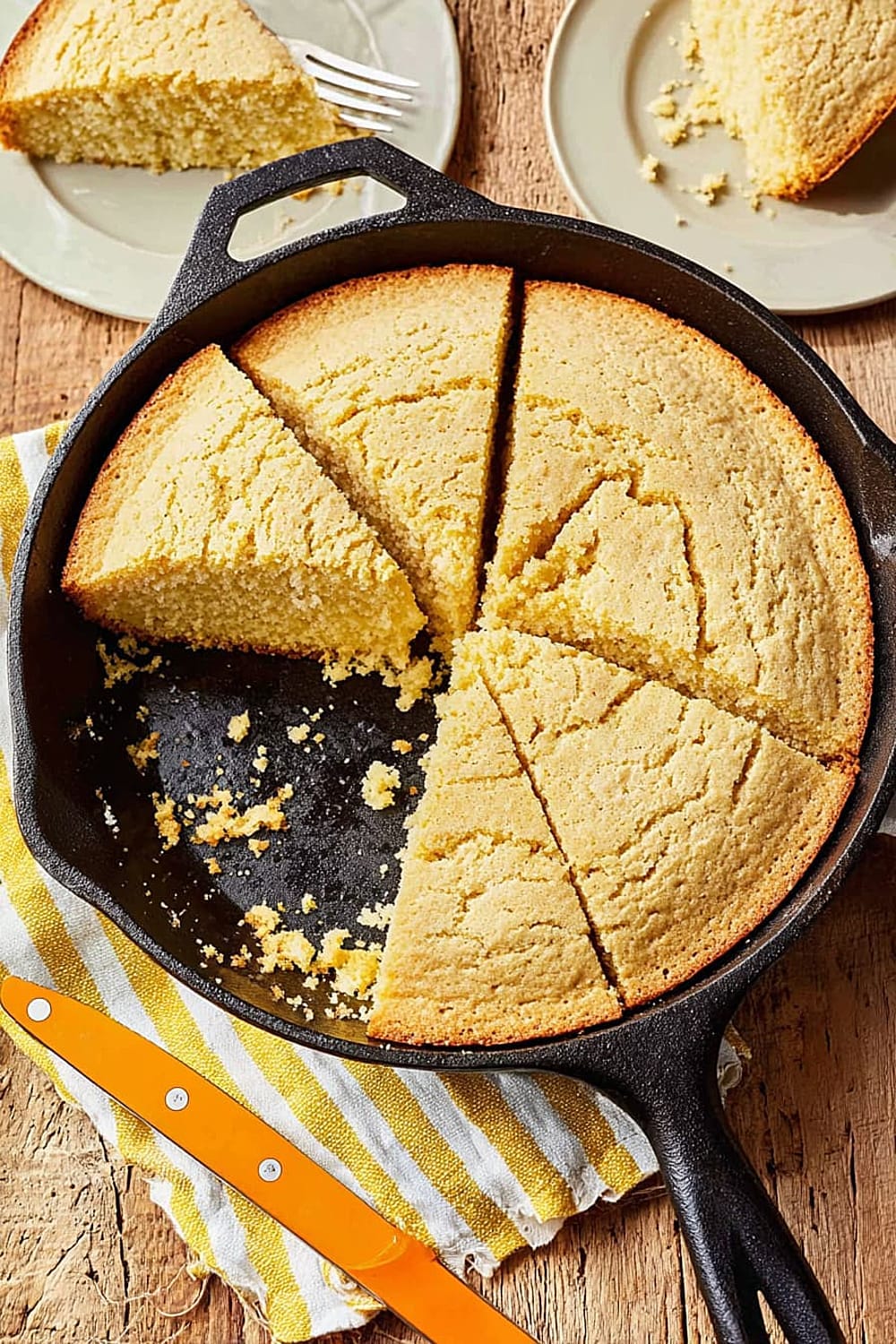
Pro Tips and Troubleshooting
Professional Techniques:
Always heat your cast iron skillet until the fat is truly smoking—this creates the signature sizzle and prevents sticking. Don’t overmix the batter; lumps are your friend and indicate you haven’t developed the gluten too much. Room temperature buttermilk incorporates more easily than cold, creating smoother batter and more even texture.
Common Mistakes to Avoid:
Never skip the cooling period in the pan—cutting too early results in crumbly, broken pieces that fall apart. Avoid using cooking spray in cast iron, as it can create sticky buildup over time. Don’t substitute low-fat buttermilk, as the fat content is crucial for proper texture and flavor development.
Storage and Reheating:
Store leftover cornbread wrapped in foil at room temperature for up to 3 days, or freeze for up to 3 months. Reheat individual pieces in a 350°F (175°C) oven for 5-7 minutes to restore crispness, or wrap in damp paper towels and microwave for 30 seconds for quick warming.
Make-Ahead Strategies:
Mix dry ingredients up to 1 week ahead and store in an airtight container. The batter can be prepared 2 hours early and held at room temperature, though you may need to add a tablespoon of buttermilk before baking.
Recipe Scaling:
Double the recipe easily using a 12-inch cast iron skillet and increase baking time by 5-8 minutes. For individual servings, use a cast iron muffin pan and reduce baking time to 15-18 minutes.
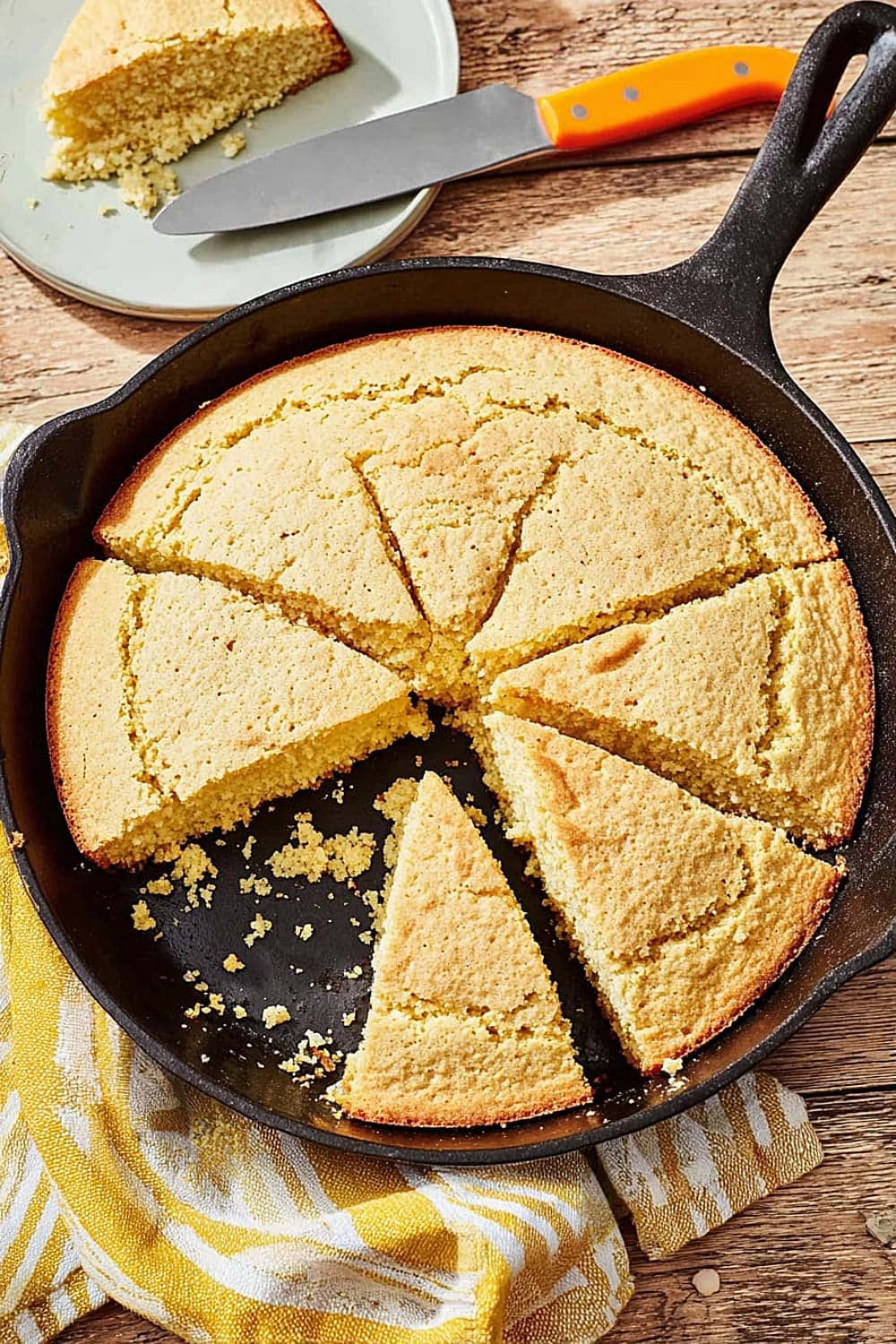
This Parton family recipe proves that the best comfort foods often have the simplest ingredient lists, relying on technique and quality ingredients rather than complexity to create something truly memorable that brings people together around the table.